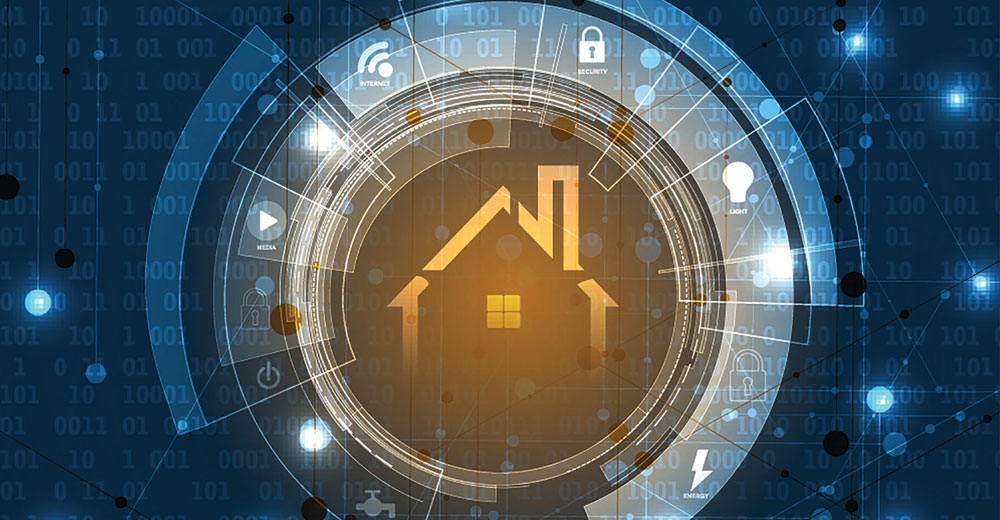Last week, I attended a Qualcomm event that took me through the coming wave of both 5G and Wi-Fi 6 products, touched on the millimeter wave, and at least spoke to 6G. From this, I think I can begin to picture the world as it will exist by the middle of the next decade, and it is kind of fascinating.
I’ve always enjoyed seeing companies apply their vision to the future, with the most iconic attempts being from Corning (A Day Made of Glass and A Day Made Of Glass 2). These efforts showcase the ultimate representation of the firm’s future vision. Intel did something similar later.
I want to take a shot at showcasing a similar effort from Qualcomm with the working title “2025: When Everything Is Wireless, Interconnected and Smart.” I’ll close with my product of the week, the ChargePoint Flex Charger.
Setting the Foundation
Qualcomm has spent nearly US$50B — yes, billion — advancing its wireless initiatives. Its current leading efforts are 5G, Wi-Fi 6, and Millimeter Wave. In general, 5G is for when you are on the road, Wi-Fi 6 is for when you are in a building, and Millimeter Wave is for tight in-building or line-of-sight outside solutions.
If you are in the U.S., you’ll likely have access to all three technologies, and where one leaves off and another picks up isn’t important. What is important is that the collection of these technologies means you can connect pretty much everything to your various networks and get wireless performance that rivals wired speeds.
Loading improves as well. Capacity can crater individual performance today. Once these technologies are in place, overall network limits will remain, but individual users should see much more linear scaling. In short, even in a stadium or conference, you’ll be able to communicate, browse the Web, and even watch videos. Today, you are often lucky to get data at all, let alone enough for full function.
So fiber networking-like speeds and latency in line with local resources will not only increase our ability to put our PC into the cloud but also connect all our currently unconnected electronic devices to the cloud so they can better interoperate, get updates, and be operated by an emerging class of user-focused artificial intelligence applications.
Many of these devices can use radio frequency technology as sensors in addition to using it for communication, meaning that repeaters, access points, and other connected devices can see what is going on around them without a camera. This works kind of like radar. No video files are collected, but organic objects and movement can be tracked.
This change doesn’t mean we won’t have video; on the contrary, Qualcomm predicts that 80 percent of data traffic will be Video by 2022.
2025: When Everything Is Wireless, Interconnected and Smart
Now, let’s fast-forward. In 2025, you likely have an advanced artificial intelligence service that manages your home. You’re awakened not by an alarm but by a smart bed heater like the Ooler. It slowly warms you until you wake up. You slept well because regardless of the temperature in the room, the temperature in your bed was perfect.
Seeing you move, your in-room access point sends an alert lighting your way to the bathroom, where your electric toothbrush automatically configures for extreme teeth cleaning because it knows you had a late-night snack before bed (yes, the refrigerator is chatty, too).
Knowing you like to shower after brushing your teeth, the shower fires up, and your tankless water heater and smart shower thermostat are set for your perfect temperature. During this time, your digital assistant displays the day’s weather and gives you a synopsis of the news you care about.
After the news, it switches to your favorite music, which then follows you around, speaker to speaker, because the system knows both who you are and where you are in your home. Your spouse’s settings override yours when you are both in the same room — because happy wife, happy life.
You go for your morning walk with your dogs, which have individual trackers on them in case they get lost or hurt. Your progress is tracked on your smartwatch. While walking, you engage in a video conference using your phone. Your watch alerts you of approaching cars or other hazards you might miss due to being distracted by the phone.
Crosswalks sense when you are close to alert the cars near you that you are about to cross the street. Simultaneously, they give you the green signal and actively alert drivers that you are now an obstacle to avoid.
As you’re getting ready for work, your AI — which knows your schedule, the tastes of those you’ll be meeting with, and the weather — suggests a couple of clothing choices, showing renderings of you wearing them on a full-length TV screen.
When you make your selection, lights on drawers and coat hangers turn on, pointing you to the relevant garments. Once dressed, you leave the house, with doors unlocking as you approach and locking after you pass. The car, anticipating your arrival, has prewarmed the cabin, seat, and batteries (it is, of course, an electric car), and it has checked the traffic and routing.
You kick back and let the car take over — it is autonomous, after all — and it makes steady progress to your destination, having worked out the best route. After dropping you off, it drives away to a prearranged parking location that includes a wireless inductive charger.
After you’ve cleared through security, your smart glasses guide you to your designated elevator and, once on your floor, to your assigned office or cubicle for the day. When you enter the office your workstation, which is shared, automatically configures itself for your use. A box with your supplies is waiting for you, and your first call is cued up and ready to go.
At the end of the day, you place your stuff back into the box, and when you leave, the work area transforms for the next user. The car picks you up, and you listen to news relevant to you for a while, and then decide to use the big screen in the car to play the latest hot virtual reality game, using your smart glasses and a controller you placed in the car for that very purpose.
Your brother calls just as you arrive, and his rendered avatar walks with you as you enter the home, chatting as though he were there. Sadly, your brother died several years back, but the AI renders him nearly perfectly and has captured much of his personality, so it feels very much like he is there visiting with you.
The lights, temperature and security features of the house automatically configure to your needs and operate autonomously throughout the evening. Alerts about news items that might interest you are provided, along with your favorite music, until you sit down. Your smart glasses then provide the TV programming you want to see.
Throughout the day, behind the scenes, things have adjusted themselves to your unique requirements. You’ve gotten alerts and news when you most need them, and your safety and security have been ensured. Technological tools have prioritized your tasks automatically, provided sustenance when you needed it, and helped you with both your personal and company relationships.
Wrapping Up
This is a rough view of the future spread out in front of you — one in which nearly every electronic device is controlled remotely and has some ability to sense what is around it when necessary.
In this future world spaces configure themselves to your unique needs. Communication and collaboration are seamless and timely, and your security and safety are ensured through an AI that has your back.
Because cables will be a thing of the past, there will be fewer disruptions due to catastrophic weather events, although we will have more of those. AI technology will configure your homes and companies to optimize your chances of surviving those events intact or help you get to safety more effectively and quickly when that’s the wisest option.
It will be an amazing time, and it’s only a few short years away if the capabilities Qualcomm anticipates advance as expected. I do expect locations in Asia — like South Korea — to be leading the charge to get there first, but it should be amazing.
I drive a Jaguar I-Pace, which is the first electric car from that company and arguably the best-looking affordable electric car in the market. However, like all-electric cars, it is likely to get upgrades throughout its life, including generational upgrades as new versions of the car released.
One component most likely to get updated is the charger, which currently maxes out at 32 amps. The ChargePoint charger I have will be obsolete soon, and I’ll need to replace it.
The new ChargePoint Flex charger can be upgraded to 50 amps, which should provide electric car enhancements for the foreseeable future.

It has the same strong app support for tracking charging, scheduling charging, and locating public chargers. The big advancement, though, is that it can be configured with the app to increase its charging capacity significantly during its service life. At 50 amps, which you get with 70 amp breakers and a hard-wired installation, you’ll get a far faster charge once your car can charge at that rate.
Sadly, the ChargePoint charger I have is not this charger. Jaguar doesn’t have a trade-in program, and my car won’t take more than 32 amps anyway at the moment. Still, if I were to buy a new charger today, this is what I’d get.
Since this charger solves a critical problem for me, the ChargePoint Flex Charger is my product of the week. Think of it as future-proofing.

























































Interesting, but seeing as the poor are being made poorer all the time, I AM interested to know how people will pay for all this?
Like any technology change, this one will tend to be top-down due to the conversion costs. Bill Gates has had some of this for decades now, but only us early adapters have some of it. Wireless technology will make the technology cheaper, easier to retrofit, and easier to use, but by 2025, it will still be too expensive/difficult for most.